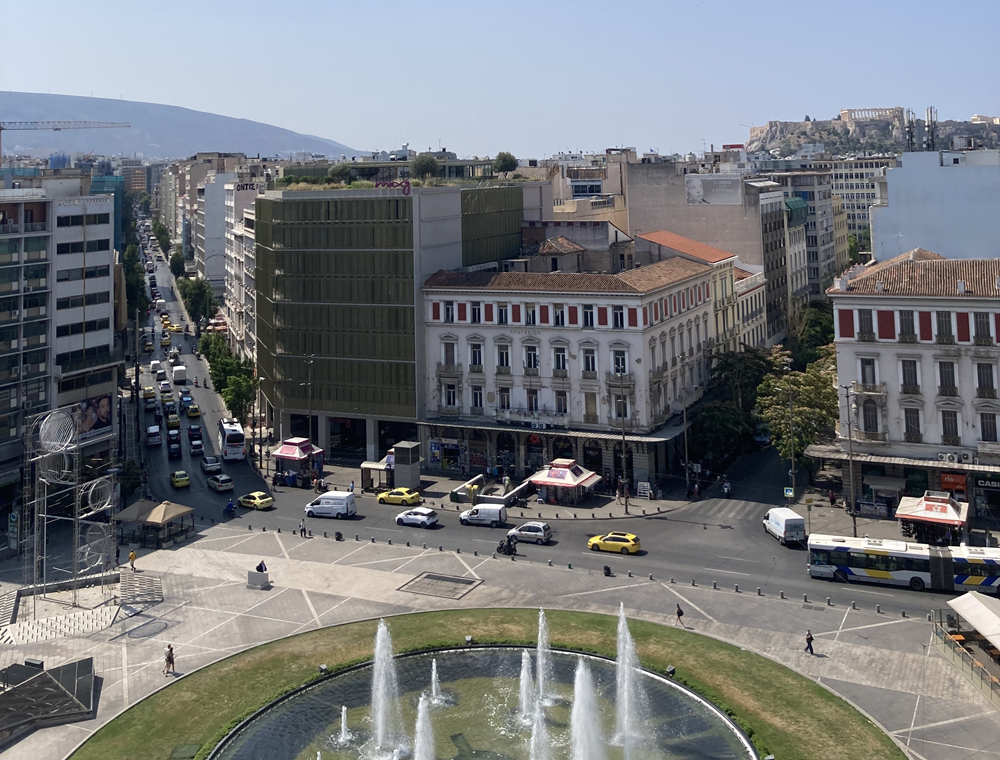
It is difficult today to imagine the shape of Athens before the mid-19th century, when the city began to take the form of a modern city. It is not uncommon for modern streets to have replaced ancient streams that once ran through Attica.
Stadiou Street is one of those central streets in the city that took the place of a stream which remained outside the city limits both in ancient and more recent times. The stream remained just outside the wall that enclosed Athens from 1778 until 1834, when what was left of it was demolished.
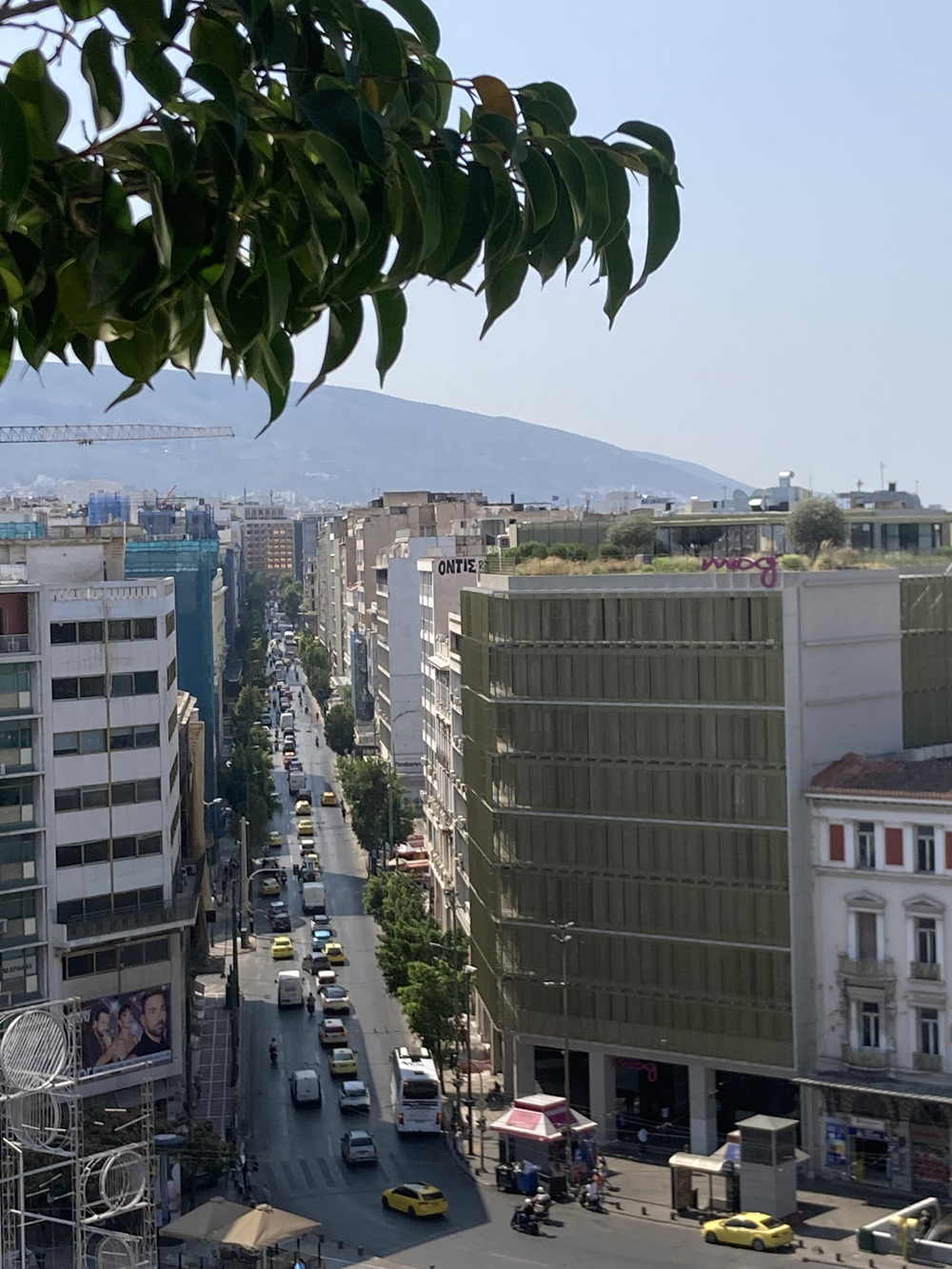
By then, Athens was the capital of the newly established state, and the architects Kleanthis and Schaubert had drafted the city plan. According to this plan, Stadiou Street was laid out to be one of the city’s main arteries, connecting Othonos Square (now Omonoia Square) with the Panathenaic Stadium, which at that time was nothing more than an ancient monument buried between the hills of Agra and Ardettos.
However, continuous changes to the city plan altered the size, course, and endpoint of the street, which would now lead to Syntagma Square. Nevertheless, the street’s name remained unchanged for more than a century. In March 1945, the Municipality attempted to rename the street “Winston Churchill Street” as a gesture of gratitude towards England, possibly also due to the role of the British Prime Minister during the December events (Dekemvriana). Of course, this attempt failed, as the new name was never adopted by the city’s residents and eventually fell into oblivion.
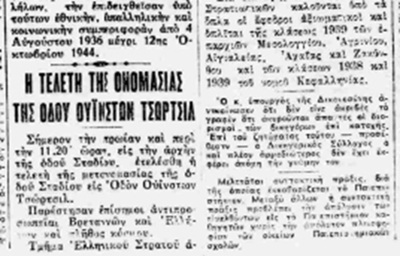
Newspaper Estia
From its very inception, the street was destined to become a straight boulevard 30 meters wide. The covering of the stream and the planting of trees quickly led to the construction of stately private residences, public buildings, and commercial shops. The acacias, gardens, wide sidewalks, and neoclassical buildings along the street would certainly have given Stadiou Street a completely different appearance from what it has today. Nevertheless, there are still buildings on Stadiou Street with a history of more than a century, continuing to play a role in the life of the city.
One of the first buildings on the street, the Kontostavlos House, located where today’s Kolokotroni Square stands, became connected with the parliamentary history of the country. After the September 3, 1843 Revolution and the establishment of the Constitutional Monarchy, a space was sought to house the Parliament and the Senate. Indeed, the Kontostavlos House served this role for about a decade until it was destroyed by fire.
The permanent Parliament building was founded in 1857, and the official start of sessions took place in 1875 with Charilaos Trikoupis as Prime Minister. The building functioned as the Parliament for 60 years, hosting the discussions and critical decisions of this turbulent period in Greek history. After the Parliament moved to the Old Royal Palace (1935), the Old Parliament building was handed over by Eleftherios Venizelos to the Hellenic Ethnological Society to house the National Historical Museum. The Museum opened to the public in 1962 and has since become one of Athens’ landmarks. Its permanent collection includes relics of modern Greek history and features a rich photographic archive and library.

The Parliament building and its courtyard on Stadiou Street.
Romaidis Brothers, (?), circa 1890, collotype.
Photographic Archive of I.E.E.E. – National Historical Museum, Athens.
However, the strongest point of reference not only for Stadiou Street but for the entire center of Athens is the equestrian statue of Kolokotronis in front of the Museum. The statue has its own history. It is the work of the sculptor Lazaros Sochos, similar to the one located in Nafplio. After many discussions and disagreements about the statue’s placement, the traffic island at the intersection with Kolokotroni Street was finally chosen, where the equestrian Kolokotronis was installed in 1904. In 1954, as part of the square’s redevelopment works, the sculpture was moved to its current location, becoming one of the most popular meeting points, “watching” thousands of people pass by—some hurriedly, indifferent, and others stopping for a few seconds to admire it.
Apart from the Parliament, other buildings related to the functioning of the state had also been constructed on Stadiou Street. In 1834, at the intersection with Arsaki Street, the National Printing House was erected. The single-story building changed use in 1931 when a second floor was added to house the services of the Athens Court of First Instance.
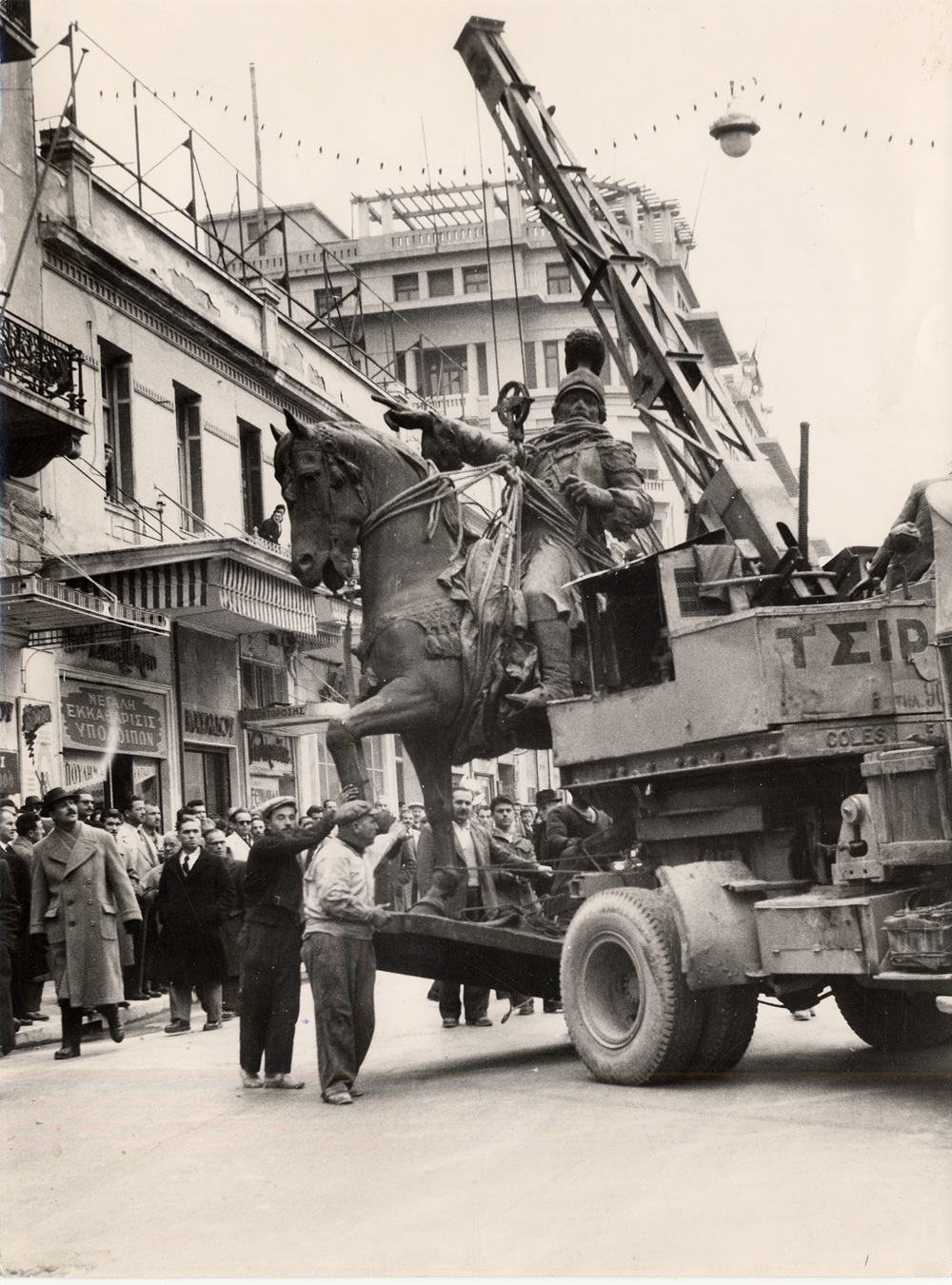
Relocation of the equestrian statue of Theodoros Kolokotronis from the small square at the intersection of Stadiou and Kolokotroni Streets to the courtyard of the Old Parliament.
United Photoreporters Agency, 1954.
Photographic Archive of I.E.E.E. – National Historical Museum, Athens.
In 1837, the first Greek Mint was built. The square in front of it was initially named Mint Square, changing names over time depending on its use and circumstances. In 1878, the Mint was expanded and became the Ministry of Finance. However, the square in front of it became known as Klafthmonos Square due to the presence of the Ministry of the Interior in the same square, where dismissed public employees gathered, begging to be rehired. It was common practice for public servants to be dismissed and replaced after each change of government, at least until 1911, when civil service permanence was established.
Perhaps the most characteristic example of the identity the street was to acquire is the construction of number 38, the central branch of the then only bank in the country, the National Bank, in 1874. The Bank had been founded in 1841 by Georgios Stavros and quickly developed, becoming a pillar of the Greek economy. In 1901, at the turn of the 20th century, the building was remodeled, acquiring the form it still retains today.
However, the economic and social conditions of the country and internationally necessitated the establishment of a Central Bank. This happened in 1928 following a relevant recommendation by the League of Nations. The first building of the Bank of Greece was completed in 1938 on Panepistimiou Street. Meeting the demands of the time, the building was gradually expanded to eventually occupy the entire city block and, in the 1970s, extend to Stadiou Street.
A landmark in the evolution of the city’s identity and scale is the building of the Army Shareholders’ Fund. In the area between Stadiou, Amerikis, Panepistimiou, and Voulkourestiou Streets, the royal stables had been constructed since the era of King Otto, so they would be close to the Palace. However, Athens at the beginning of the 20th century was now a rapidly growing city, called upon to fulfill the role of a modern capital. Within this context, it was natural to seek a new use for the plot of land. Thus, the Army Shareholders’ Fund building was constructed on this site, designed by architects V. Kassandra and L. Bonis. The building was imposing in size and followed the architectural standards of the period. From its construction, it housed offices, shops, and entertainment centers—a character it largely retains even today.
By then, Stadiou Street had become a place for social gatherings and entertainment for Athenians. Besides the commercial shops, entertainment venues and theaters operated along the street. One of these was visited by C.P. Cavafy in 1901 when he was in Athens, although he was apparently not very pleased with it:
“In the evening, Alexander and I went to the ‘Variete’ Theater on Stadiou Street. Puccini’s ‘La Bohème’ was playing. The troupe was rather third-rate. The theater is as large as the Omonoia Theater, but less clean and well-kept, and its café was a real furnace. […]”

Η οδός Σταδίου από το ύψος της οδού Βουκουρεστίου. Δεξιά το πενταώροφο κτίριο του Μετοχικού Ταμείου Στρατού,στο οικοδομικό τετράγωνο που καταλάμβανε παλαιότερα οι οι βασιλικού στάβλοι. Επιστολικό Δελτάριο, Μεσοπόλεμος. Φωτογραφικό Αρχείο Ι.Ε.Ε.Ε.- Εθνικό Ιστορικό Μουσείο, Αθήνα.
Stadiou Street also played a leading role in the early days of cinema in Athens. The screening of films in Greece is linked to the expansion of the railway network and electric lighting, which is why it appeared somewhat late compared to other European countries. For the first screenings, the same approach was followed as in other countries—that is, selecting an empty, available shop in a commercial, central location where theaters were already operating. The most suitable choice that met these criteria was none other than Stadiou Street. It was there that Athenians watched cinema for the first time at the Edison Cinema and the “Parisian Cinema.”
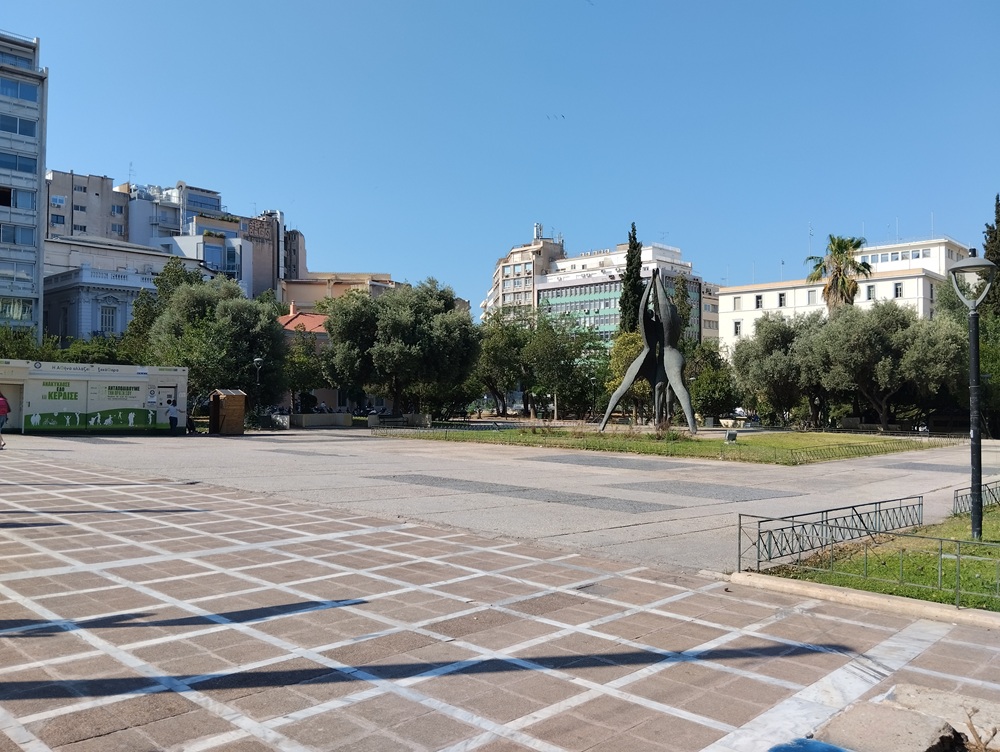
The film industry had now made a strong appearance in Athens. Stadiou Street would continue to play a leading role in this new form of entertainment. In 1910, the Attikon cinema hall was established in the garden of the Vouros House. The commercial success was enormous, leading to the reconstruction of the building based on designs by the architect Alexandros Nikoloudis. It was the first luxurious cinema hall in Athens, a meeting point for the “high society” of the capital.A landmark year in the country’s cinematic history was 1929, when the first talking film in Greece was screened at the Attikon cinema. For more than a century, cinema remained a reference point for the city’s cultural life. In February 2012, a large fire caused by unknown individuals on the sidelines of a protest destroyed a large part of the building, which has since remained “a ghost” of its history in the center of Athens, awaiting restoration and reuse.
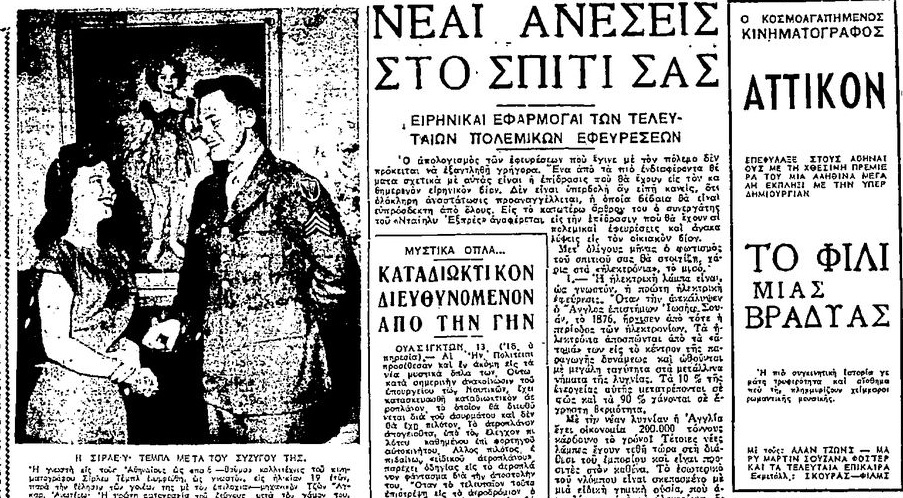
Newspaper Eleftheria
The same fire also destroyed two other long-established shops in the city’s commercial sector. The Kosta Boda store, almost synonymous with gift shopping for decades, had opened on Stadiou Street in 1972 and was officially renovated in 1981. Kosta Boda is a renowned brand known for luxury glassware and home decoration items, representing many prestigious international brands in Greece.
Another commercial store that made its own significant mark in the country’s business history was the Delicatessen of the Vassilopoulos Brothers at 19 Stadiou Street, inaugurated in 1950. The store offered high-quality European products, which was quite unusual for Greece in the 1950s. Naturally, the shelves and refrigerators attracted members of Athens’ upper class as well as their domestic staff. The store was also honored as an official supplier to the royal court.
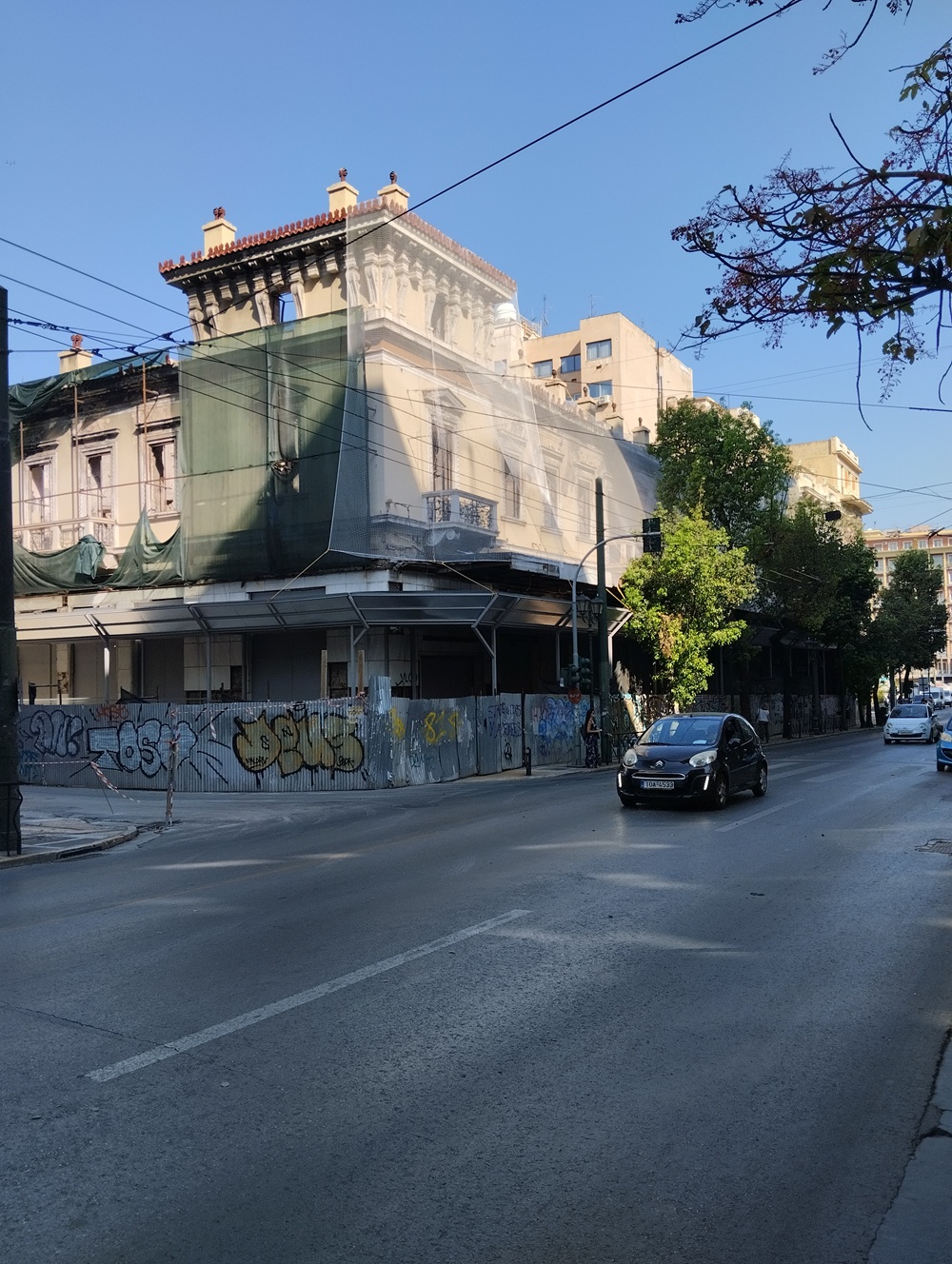
The commercial shops and entertainment venues established Stadiou as the street frequented by the most educated and prominent members of Athenian society. It was therefore natural that it became the most suitable meeting point for Athens’ book lovers, centered around the Estia Bookstore, which was housed at number 32 in 1885. Since at the end of the 19th century the number of people who could read was quite limited, G. Kordonis’s choice to found a bookstore was a rather risky business move but also indicative of the dynamism of the city center. After more than a century of operation on Stadiou, the bookstore moved to Solonos Street, where it remained until its permanent closure in 2021.
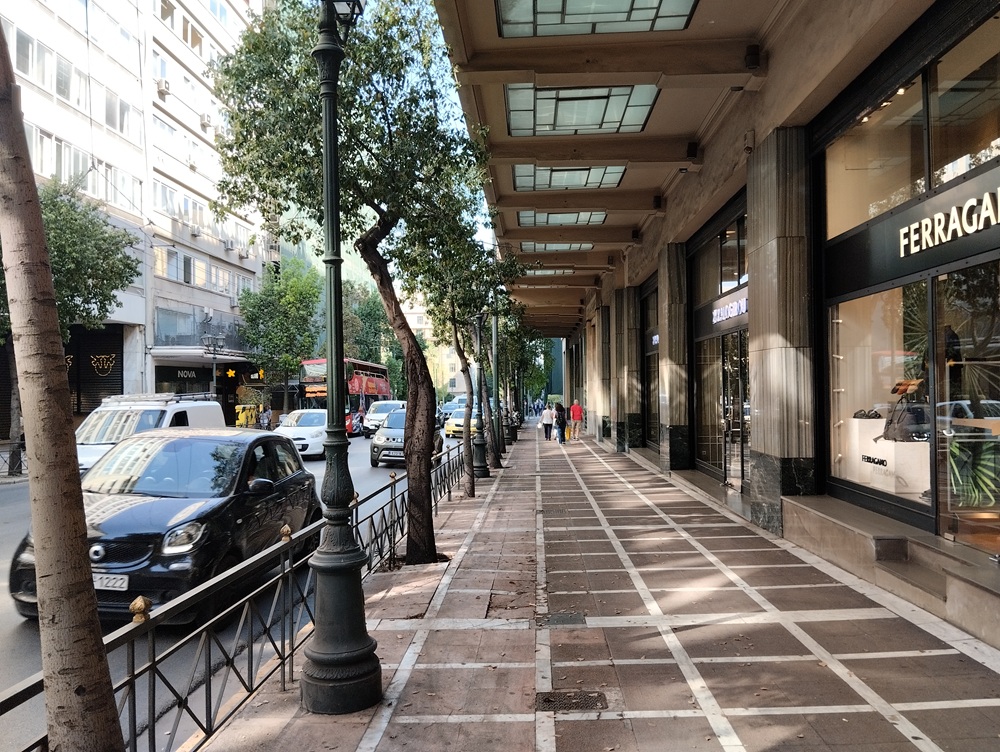
The baton was taken over by the IANOS bookstore, which operates at number 24 Stadiou Street. Not only was it a landmark for the city, but it also became a support for Stadiou Street during the difficult years of the economic crisis, when the city center had lost its vitality.
A characteristic feature of Stadiou Street’s identity was the operation of hotels there already from the late 19th and early 20th centuries. Along its entire length, more than ten large hotels operated. At the intersection of Stadiou Street with Korai Square, the long-standing hotel “Egypt” operated, followed by the hotel “Ai Athinai.” The building, having undergone the necessary modifications, still exists today as a commercial store.
A few decades younger (1905) was the “Anaktorikon” or “Palace Hotel,” which was built specifically to be a hotel at number 22 of the Kalamari Mansion on Stadiou Street. It was a luxurious hotel with 75 rooms, featuring electric lighting, heating, and an elevator, catering to the wealthiest visitors of Athens. The building was demolished in the 1960s, making way for the “Esperia Palace Hotel,” which in turn ceased operations after half a century. The legacy was taken up in 2023 by the luxurious NYX ESPERIA PALACE.
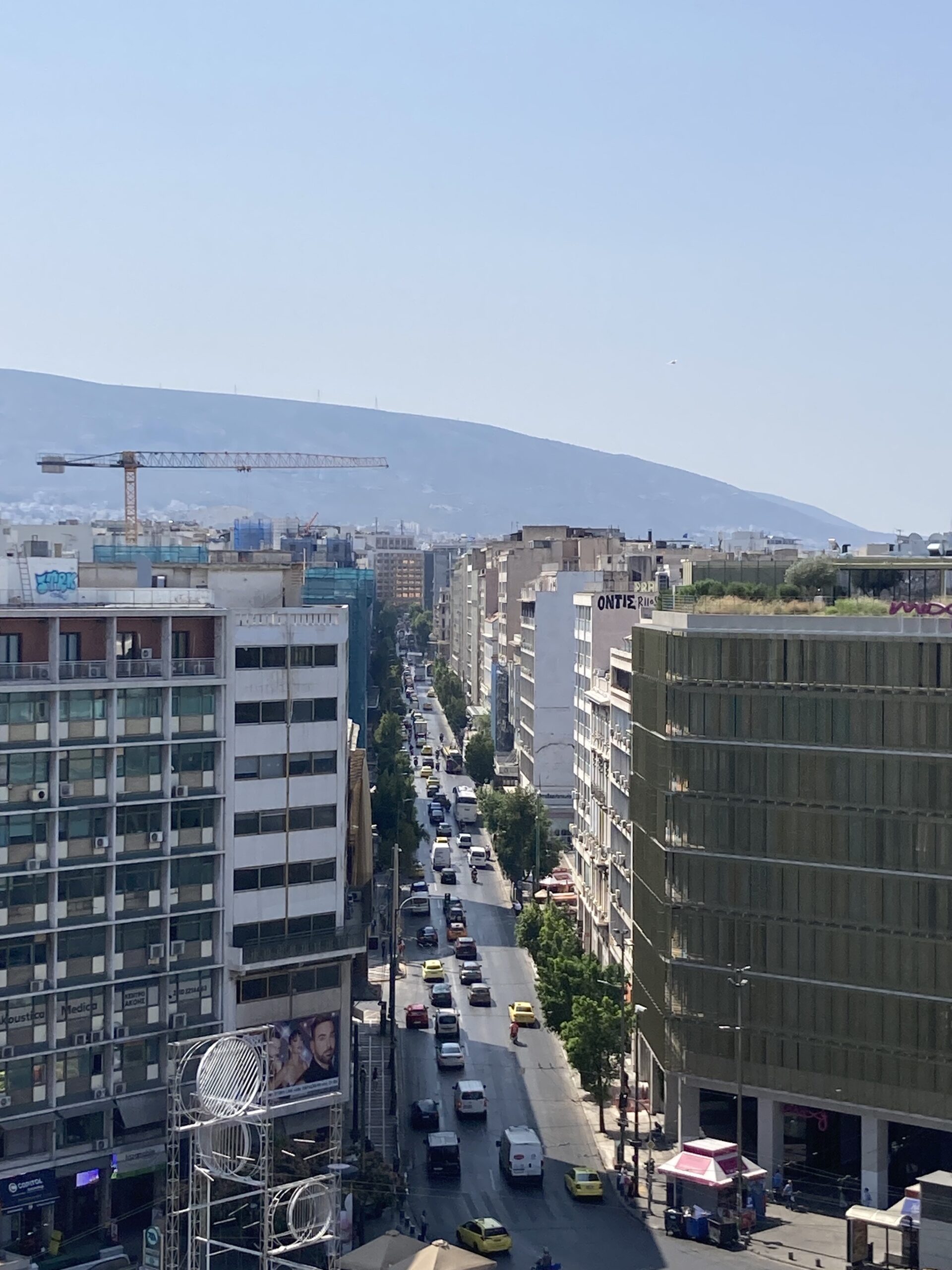
Also, in the early years of the 20th century, another modern hotel in Athens had its roots. In 1909, artillery officer Petros Saroglou bequeathed his large estate to the “Army and Navy Officers’ Club” with the wish to establish an Officers’ Club in Athens on the site of his house in Omonoia. However, a more suitable location for the Club was considered to be the area on Vasilissis Sofias Avenue, where it remains today. The site of Saroglou’s house was utilized by the State, which built the Athens Magistrate’s Court building there, which remained in Omonoia for decades. From 2020, after years of abandonment, the building found its place again in the life of the street as the luxurious MOXY hotel.
Although the image has changed, Stadiou Street remains a bustling road, an important arterial street of Athens, where public transport, private vehicles, workers, tourists, and consumers coexist…

Today, Stadiou Street, like the entire center of Athens, could perhaps be described as a street in transition. Many of the abandoned buildings are undergoing renovation, restoration, and change of use. The entire economy of Athens is now largely focused on tourism, and Stadiou Street claims a central role in this new reality. However, even today, a walk along Stadiou Street reveals almost all the periods Athens has experienced. The creation of the capital, the organization of the state, the evolution of the economy, the difficulties of the economic crisis, and the new path Athens seems to be following—all are reflected in the historic buildings, the scaffolding, the expensive shops, the closed stores, and the modern hotels…
Useful Sources
Demesticha, Ekaterini, The theatrical life in Athens in the era of George I (1864-1900): the performances, PhD thesis (https://freader.ekt.gr/eadd/index.php?doc=28138&lang=el#p=62)
https://www.mixanitouxronou.gr/
https://www.elia.org.gr/research-tools/hotels/streets/stadiou/

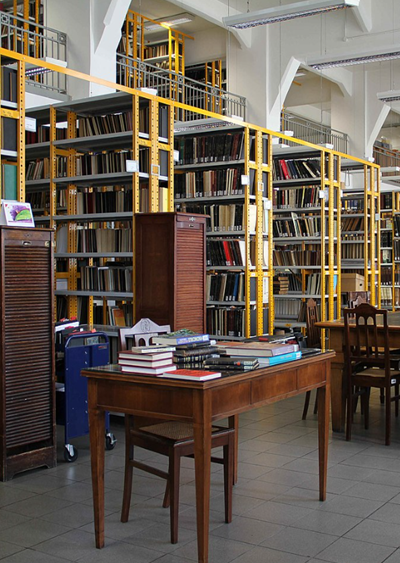


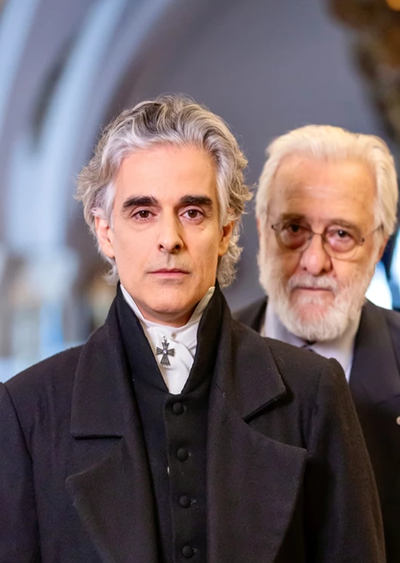


Leave A Comment